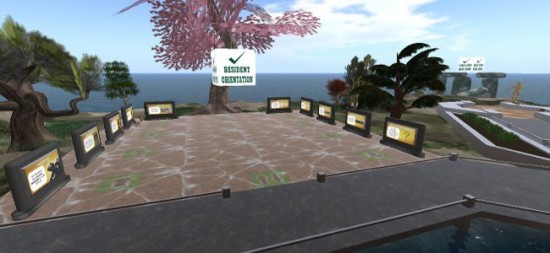Yesterday, I posted a story (yes, a little on the long side) about a new services from PioneerX Estates where they manage your whole grid for you. Everything — estates, land rentals, voice — all the tech stuff for a ridiculously low price of $41 a month.
(No, they are not an advertiser, and have never been. And we don’t use their services. But we have talked to some very happy customers.)
Okay, PioneerX by itself isn’t that big a deal — I expect other vendors to be rolling out similar product suites soon — what the big deal is that it is now possible to separate the technology aspects of running a grid from the other business functions.
I’m not saying that techies can’t also be good at design and marketing and customer service and community building.
But with the soup-to-nuts grid management services offered by PioneerX — everything from the rental management system to currency, groups, banning users, and tech support — folks can start grids even if they have no technical skills whatsoever.
Again: no technical skills whatsoever.

The World Wide Web exploded when non-techies were able to set up Web sites. Sure, plenty of sites are run by technically astute folks who know their way around the Apache console and PHP scripts and MySQL databases.
But a lot of companies turn that kind of thing over to someone else and focus on the content — using the sites to create communities, deliver news or information, sell products, or show funny pictures of cats.
With services like that of PioneerX, a would-be grid owner could have a great idea, and then go out and put that idea into practice without having to learn server management, MySQL, and C#.
Do you want to create a world where everyone is a dragon? A place where folks can get together and play virtual chess? A singles lounge for people who only want to talk about their pets? A grid where psychics can give readings?
Grid services from PioneerX start at just $41 a month, with another $41 a month per hosted region (expect to see substantial discounts for renting multiple regions).
No up-front costs.
Now that doesn’t mean that you load up some bare regions, put up a big welcome sign, and people will come streaming in.
But, right now, it seems too many startup grids are trying to do just that. Grids managed by technologists who think that customers are desperate to join a grid just because the price is lower than Second Life. (Not all techies think this way. But I’ve met a few who seem genuinely surprised that customers aren’t breaking down the doors.)
By allowing non-technies to create grids, we might see a true flowering of the hypergrid.
We’re already seeing the beginnings of this. Jo Kay’s Jokaydiagrid is managed by ReactionGrid, for example, giving her the freedom to create a community focused on education. Jokaydiagrid even rents out regions on the grid.
PioneerX allows grid owners to go even further — to have in-world currencies, to allow their users to set up land, store and apartment rental businesses, to manage paid club memberships, and to track their in-world transactions.
In other worlds, if anyone out there thinks they can do a better job at running Second Life than Linden Lab does, they can now put that theory to the test.
Let’s run some numbers.
Say you are considering getting a region on Second Life for a year. That’s a $1,000 setup fee, plus $300 a month for 12 months — a total of $4,600. For that price, you can get grid services from PioneerX for a year — $492 — and have $4,108 left over for region rentals. Enough for eight high traffic regions a month — or up to 32 low and moderate-use regions (or more, if you get a bulk discount from PioneerX).
That’s enough land to start putting up some facilities. The chess tournament center. The dragon mountain. The psychic mall. Instead of focusing on keeping the servers up and running, you can focus on the effectiveness of your advertising campaigns. Instead of running around answering tech support calls, you can focus on customer satisfaction.
In other words, you can dedicate your time to improving the content of the grid. And by content, I don’t just mean buildings. Yes, pretty things are nice but content can come in other forms as well. Your unique offering could be the people and relationships on your grid, celebrity endorsements, your sense of humor, your hosting skills, your supportive nature.
Should you set up your grid now?
You can get in early, and try to grab the early-mover advantage. Or you can wait for more hosting vendors to roll out similar management suites and wait for functionality to improve and for prices to drop even further.
- International singers gather on Alternate Metaverse Grid for first annual International Day - April 15, 2024
- OpenSim hits new land, user highs - April 15, 2024
- Wolf Territories rolls out speech-to-text to help the hearing impaired - April 15, 2024
